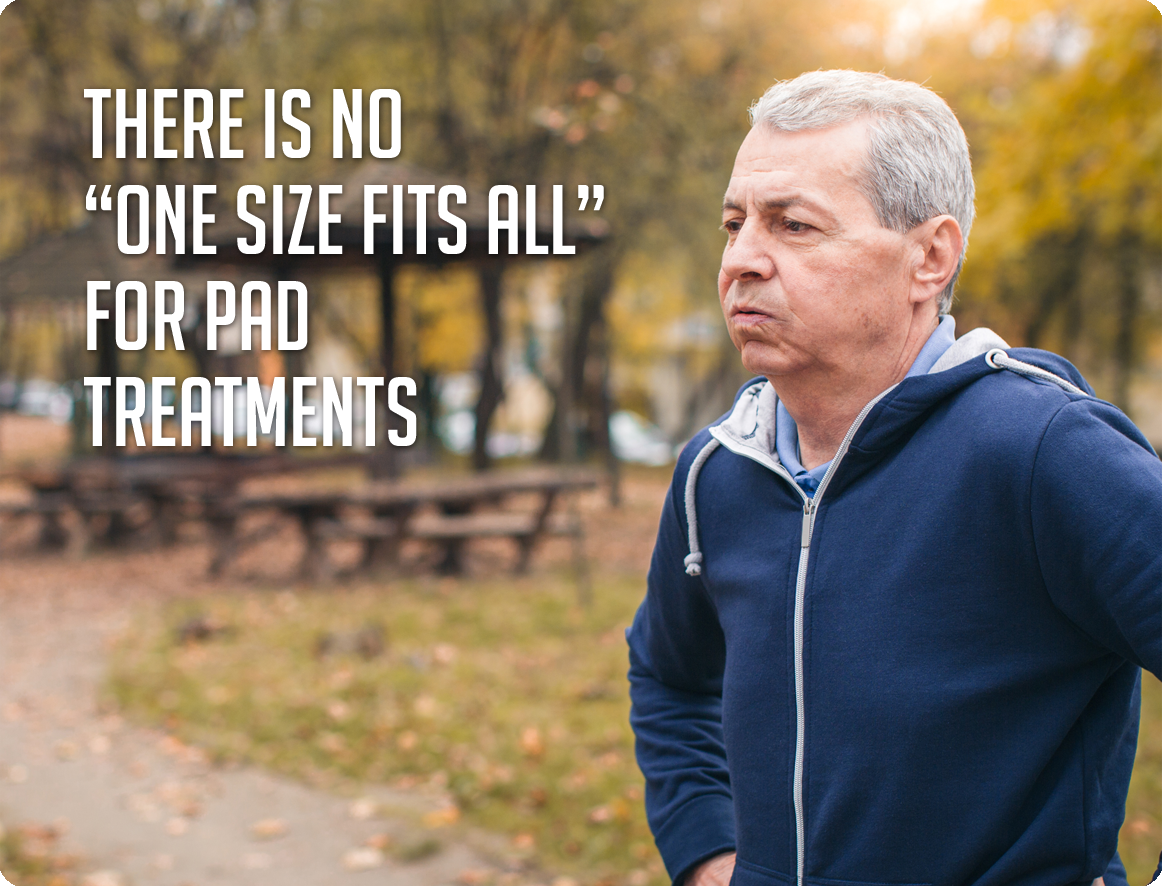There is more than one way to manage your peripheral artery disease (PAD) symptoms and your preferences matter. Your lifestyle, your preferences and other medical conditions all play a role in your decision. You may need a combination of treatments, and those may change throughout your lifetime. First, let’s help you understand PAD, as well as its risk factors and symptoms.




Only
of PAD patients who smoke receive a referral from their doctors for smoking cessation resources.
Ask your provider about resources to help you quit smoking.
SOURCE: PORTRAIT Study 2017
Leg pain in your calves and buttocks, called “claudication,” may occur when your muscles do not get enough blood and oxygen. Leg symptoms that occur while walking may include:
These symptoms usually disappear after a brief period of rest (within 10 minutes).
Some patients may report other leg symptoms:


![]()

More questions?